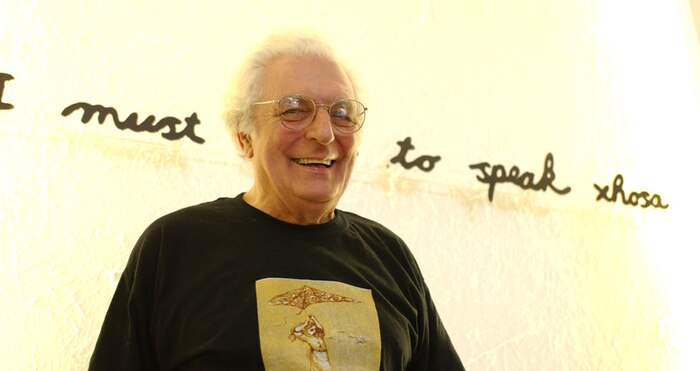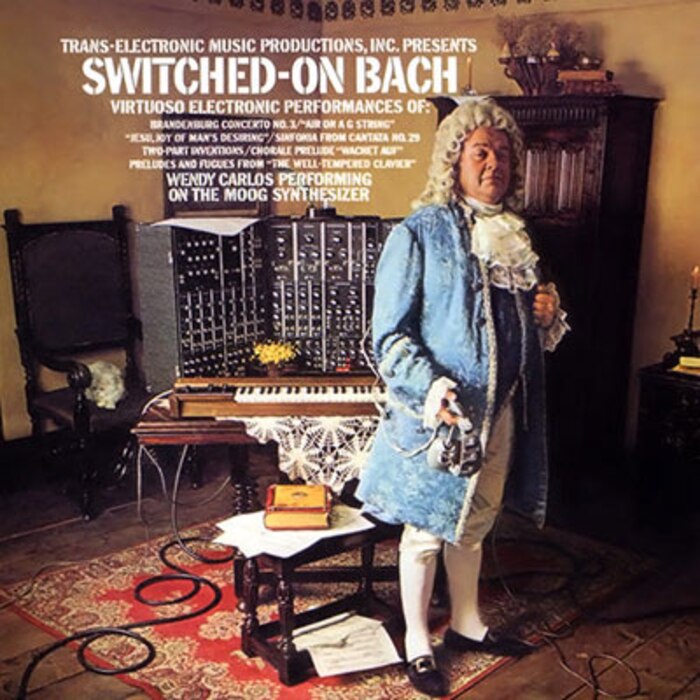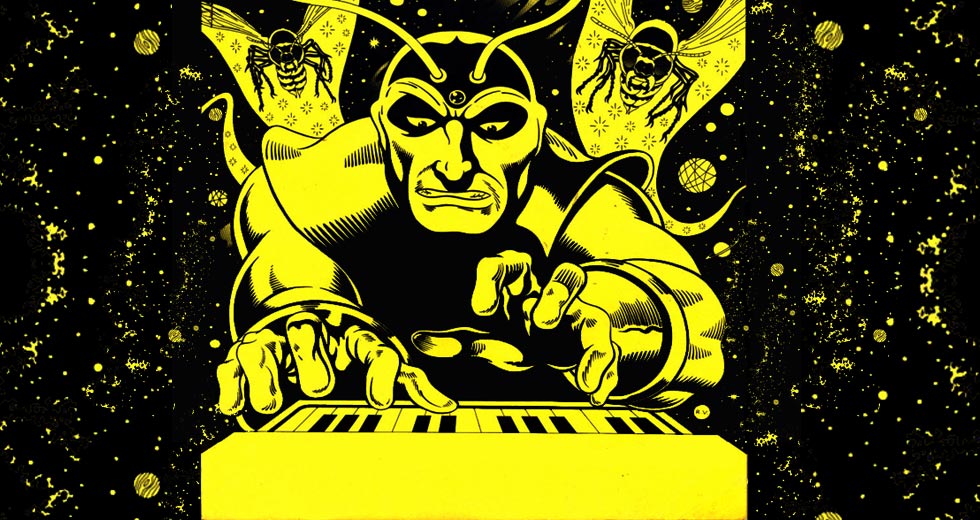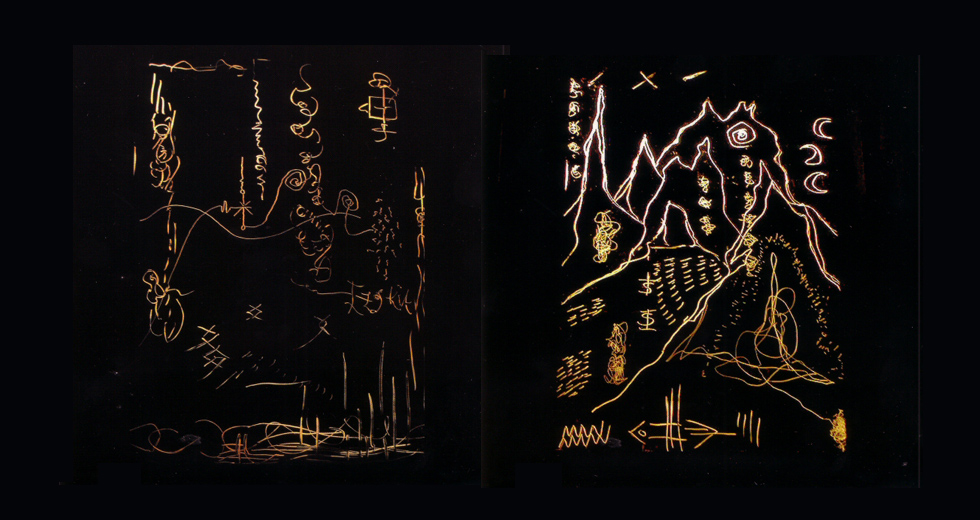Synth-Aesthesia: An Interview With Bob Moog
In advance of next week’s festival in his honour in Asheville, North Carolina, we revisit the lecture session by the late, great Bob Moog – the man without whom the Synth-Aesthesia series probably wouldn’t even exist. The session took place at the 2003 Academy in Cape Town, and was hosted by RBMA’s own Torsten Schmidt.

RBMA: Building a synthesizer is not what you dream about as a little kid – how did you gain that fascination with things like oscillators, modulation and all that other freaky stuff?
BOB MOOG: When I was a kid, I got off on electronics, especially electronics that made a sound. And when I say electronics, it was not the electronics of today. Back then, electronics was one or two vacuum tubes, a couple of resistors, capacitors and these big, fat transformers. You could put the whole thing together on the kitchen table, it was a hobby. Some kids were out playing baseball, nearly everybody else was out beating each other up. I couldn’t do either, but I really liked electronics. My father was one of the first amateur radio operators. He remembered days when vacuum tubes were powered by batteries. I may have seemed very avant-garde and modern to him. Same as what you do today seems natural to you, because you’ve grown up with computers and digital stuff, the electronics I grew up with would seem natural to me, and I’ve been at it ever since.
“There was a section of downtown Manhattan that had a market for electronic parts. It had little stalls where you could buy resistors, tubes, micro-processors and whatnot. It was just a hobby.”
RBMA: How did you go from playing around with transistors on the kitchen table to building a theremin?
BOB MOOG: Back then, where the World Trade Center was – even before there was a World Trade Center – there was a section of downtown Manhattan that had a market for electronic parts. There’s such a thing in Tokyo today, it’s called Akihabara. It had little stalls where you could buy resistors, tubes, microprocessors and whatnot. It was just a hobby. I went to the Bronx High School Of Science, which was a very good school and still is. And, what’s even better: they won’t beat you up for being a nerd! [laughs] I went to engineering school there and loved it.
RBMA: So, how did the approach to sound design come back in there again?
BOB MOOG: Well, I learned the basics in school, and electronic sound design became an important part of music back then. I was right there with the people who were doing it, and I was helping them do it.
RBMA: Who were these people?
BOB MOOG: In 1964, almost 40 years ago, I met an experimental composer, which back then meant that you have a reel to reel tape recorder, a razor blade and splicing tape. That’s how you began. Anything else that would create sounds was extra, you had to have this tape recorder. The first person I worked with was Herb Deutsch. He was a music teacher at Hofstra University in Long Island. He had a vision of making music with his tape recorder. Very experimental. There was no such thing as an audience for this. There were maybe a hundred people in all of New York City who knew what electronic music was. I met Herb at a music teachers’ conference, and it turned out he was using a theremin that I had built. When he asked me if I knew anything about electronic music, I thought to myself, ‘Well, I know electronics, it’s my hobby and I took music lessons. Yes, I know about electronic music!’
I had no idea that there were composers trying to put together this new form of music with electronic processors and tape splicing. I learned very quickly from Herb, and after a while he asked me if I could help him make some new sounds. I asked him what he had in mind, and he made some mouth sounds [imitates blops and bleeps]. That was the beginning. I knew about transistors, which were just new then, and don’t ask me where the idea came from to make what’s called a voltage controlled oscillator (VCO) or a voltage controlled amplifier (VCA), I just thought about it, in the same way as many of you think about putting a tune or a mix together, the idea came.
RBMA: What the hell is a VCO then?
BOB MOOG: [starts twisting knobs on a Moog Voyager and plays a low tone] If you look at the speakers, you see the membrane going in and out. It’s vibrating in response to an electrical voltage that’s going up and down, it’s an oscillator. As I go up the keyboard, the oscillator goes faster [plays some higher notes]. That’s an oscillator.
Now, what is a voltage controlled oscillator? Back in 1964, if you were an engineer or technician who wanted an oscillator, you got out a test equipment catalogue and you’d see a picture of this big box with a knob on the front that you could set to the frequency you wanted. That was good if you wanted one frequency, one exact frequency. It’s not good for a musician, because music is all about changes in sound, including changes in frequency. It’s kind of hard to play a big knob like that accurately. So, instead of having a knob on this oscillator, there’s a place to plug something to control the sound that I can manipulate with my hands [glides up and down the keyboard]. That’s a pitch glide. The keyboard changes an electrical voltage from low to high and from high to low. I’ve turned a knob called glide rate, which slows down the steps that I would normally get playing the keyboard. That’s the sort of thing that musicians and us instrument designers learned on the job during the 60s. Nobody had this understanding before, because before VCOs it wasn’t possible to do what I just did.
RBMA: How close was the relationship between the musicians and the engineers coming up with new concepts?
BOB MOOG: Back then, most of us knew enough about music to be able to talk with musicians. A few of us actually were musicians. One person, who did a lot of work around the time I began, was Don Buchla, who is still doing fantastic designs. He was more of a musician than an engineer. More than me, Buchla had his own musical vision, which I didn’t have other than helping other musicians to do their thing.
RBMA: Who are you talking about when you say ‘us’? It sounds like a pretty exclusive club.
BOB MOOG: It was pretty small. Once I began, a couple of engineers came around and eventually joined the company. People like Jim Scott and Bill Hemsath. These are not names that are extremely well-known, but if you happen to be into ‘Mooglore’, you have heard their names. There was an Italian television engineer by the name of Paolo Ketoff. He designed an instrument called Synket in the early 60s. He worked with a lot of musicians. I think he and I were similar in that we were both engineers who liked to work with musicians.
RBMA: Ironically enough, what’s called the ‘military industrial complex’ wasn’t too bad for the development for a lot of musical instruments as well.
BOB MOOG: During the second world war the whole field of electronics advanced incredibly. Interestingly enough, the tape recorder was invented in Germany and was used during WW2. The manufacturer was called Magnetophon. A couple of American soldiers brought one of them back. They happened to be engineers for a company in California called Ampex that manufactured motors. When they brought this strange contraption with motors in it, they figured they could find something to use their motors for in this new invention, the tape recorder. That’s basically how tape recorders got started in the USA.

RBMA: What are your favourite albums as far as: ‘That’s a Moog sound, I’m proud to have contributed to it’?
BOB MOOG: Gosh, there were so many back then, and they’re all interesting. Well, Switched-On Bach and Carlos’s records that came after that were seminal. They showed what could be done that nobody understood before. That started something. The conventional wisdom of the music business in the late 60s was, that you could make synthesizers do funny sounds, ear-catching effects for radio commercials or experimental music. But you couldn’t make ‘real’ music out of them. And, of course, we all know what ‘real’ music is!?
RBMA: I was just about to ask.
BOB MOOG: People in the music business knew what real music was. Real music was music that made real money! Carlos’s record made real money and then people understood that you could use these things to produce and play music. Music that wasn’t important because it was novel, because it was the first time, but because people really wanted to listen to it. It satisfied some need, the music itself was valuable to people. Switched-On Bach is still being sold today, it was the largest selling classical record of all time for a long period. After that, thousands of musicians around the world understood that they could make music out of these things by themselves.
“Usually they said something like: ‘You expect me to sell that in my store? You expect musicians to understand all that?’ And they would walk away.”
RBMA: How quickly did the word spread then?
BOB MOOG: When Emerson, Lake and Palmer began touring, it spread pretty fast. But still, here’s our point of view: here we were, a small company, manufacturing these things. They were not cheap, because there’s a lot of stuff inside. Nothing was cheap back then, everything was analogue. It was taken for granted that, if you wanted a good sounding keyboard, you had to spend over a thousand dollars, which was a lot of money back then. The first time we showed at a trade show was at the music merchants’ convention 1971 in Chicago. I remember being at that show and the music retailers coming by, look at our product with their long faces going: “What’s that?” – “It’s a synthesizer!” – “What’s it do?” I’d play around with it a little, twist this knob there and that one here, and usually they said something like: “You expect me to sell that in my store? You expect musicians to understand all that?” And they would walk away.
RBMA: When you look at the ARP, Model D or your Voyager, something strikes you instantly. The materials that are used, like the wood – why design something that’s supposed to sound sci-fi and futuristic with such a retro look?
BOB MOOG: I never had an idea of how it was supposed to sound. It was never anybody’s goal to have it sound like something that was already in existence. Everybody I worked with had a different musical vision, worked in a different area of music. What we did was keep things as general as possible. The Moog was not designed to make a specific sort of sound.
The reason why it has a nice wood case and big, fat wheels that light up blue? It just feels good! Musicians, more than the average person, need things that feel good. Even if you use one of these little G4 Powerbooks that I see all over the place, it has to feel good. Your G4 feels better than my PC, and that’s important to you musicians. In the same sense, we tried to get the whole front panel, and the keyboard and what happens when you turn those knobs, to feel good for musicians.
You can begin almost any place. The Voyager, which has been out for about a year now, can do everything that the original Model D could, and quite a bit more. One of the most important features is that the entire front panel can be stored in a digital memory, and restored instantly. You can bring up a sound, and then change one knob after the other. Some of them won’t do anything because they are not part of that sound, others will. You begin to pick up. If you have a Keith Emerson mind, you’ll learn by turning knobs. On the other hand, if you have an analytical mind, and like to envision structure, you can read the manual. You’ll understand that it begins with the oscillators. There are three oscillators, and each section of the panel is for one of them. I can select the pitch range and the waveform.
RBMA: What is a waveform to start with?
BOB MOOG: If you have an oscilloscope that shows the shape of vibration and time, that’s what the waveform is.
RBMA: How come this explanation is so short, but they teach you all this stuff in school that you’ll never understand?
BOB MOOG: Because all the other stuff doesn’t help musicians at all. Unless you worry about how the circuits work – which you shouldn’t worry about at all – the particular thing, what these names of the waveforms actually mean, isn’t important for you. But each waveform has a spectrum of harmonics associated with it, and you hear that as a quality. And as you change the waveforms, you’ll hear the quality change. You can continuously switch between the different waveforms on the Voyager, you couldn’t do that on the original model. You can define the interval between the oscillators, and tune them to any three note chord you want. If we had an oscilloscope and we could look at the waveform, we would see that it’s constantly changing because these three waves are beating with each other. Now, that’s a technical/waveform-oriented description. For a musician, it means it’s a fat sound!
Another section on the front panel is called the mixer. Here you can adjust the volumes of the three oscillators. In addition, there’s another source of sound called ‘noise’. In combination with filters it can make effects that you can’t do with oscillators. The fifth one is called external. There’s a jack on the back where you can plug in any sound source – your guitar, your turntables, anything at all – and shape it with the rest of this stuff. The next section is called filter. If there is one electronic operation that is associated with analog synths, and the moog in particular, it’s the filter. It cuts off the higher harmonics first, then the lower ones and so on, until you’re left with just the fundamental pitch. Like the oscillators, this filter is voltage-controlled.
RBMA: LFO is a thing most of us know from a project of the same name. We knew it was speaker rattling…
BOB MOOG: Low frequency oscillator. You’re able to change the harmonics that way, so it heightens the fatness of the sound. It gives you something to be expressive with. The filter has another control that is called resonance. It emphasises a particular pitch that is filtered. There are actually two filters, both with resonance. The output is stereo, so you can move each sound in the stereo spectrum. All these are player controls – you don’t set them to an exact number. You just put your hands on them, and then, you know.
RBMA: So, being the devil’s advocate, with a new G5 powerbook only a couple of months away from us, why would I still need a machine that’s about five times bigger and probably eight times as heavy?
BOB MOOG: Hmmm, how to answer that question? For some of you, your G5 is going to be exactly what you need. Some of you will find it very easy to connect with something like the Voyager, very musically satisfying. The way this whole thing is conceived with all these knobs, the whole spacing, the fact that the switches are nice big, fat rocker switches, it’s designed to be played live.
RBMA: Interestingly enough, when you came back from the Steinski and Seiji thing yesterday, you were going on about how they gave away valuable information. I think what struck you the most, was them talking about not being enslaved to technology. It seems like they cut off your whole living.
BOB MOOG: No, that’s not right. Music instruments have always, from the very beginning of human history, used the most advanced technology of their time. Musicians need advanced technology. Whether you need a particular one depends on what kind of music you want to make and how. Our stringed instruments were developed around four hundred years ago, when precision woodworking was the highest technology. The piano came onto existence along with manufacturing technology. For most of us, the piano is likely to be the most hi-tech mechanical manufactured product that we have in our homes. In the 20th century, no such things have been invented. The technology of our time is electronics. First analog, then digital. The Moog is an instrument of the 20th century, it doesn’t use the most advanced technology, but it uses one that came into existence during my lifetime.
RBMA: What’s your point on the whole analog versus digital discussion?
BOB MOOG: We all have tools that are particularly comfortable to us. For this combination of sound producing capability and controls, you’ll find it easy to connect with the instrument [the Moog]. You can do a lot of things on your computers; the sound quality though, will be different to an analog instrument. Part of it can be explained in technical terms. A digital waveform is updated 44100 times a second, or even faster, depending on the sample rate. No matter how often, it’s updated in steps. Whereas there’s nothing ‘stepped’ at all about an analog waveform. Everything is completely smooth.
I’m searching for a way to say this that’s not going to sound completely strange. When you connect with an instrument, no matter of what sort, there is an interaction that’s outside of what’s actually going through your fingers. I hesitate to use the word ‘spiritual’, but I’m absolutely sure that there is a consciousness that we connect with. I know a lot of people, and I’m sure you do, too, who break everything they touch. I had people working with me that sat at a computer, and ten minutes later it wasn’t working any more. I know for a fact that I’m the opposite, I can make something work, if I really want to. You develop that sort of connection with an instrument. Some of you will do all that with your computers, some will do it with something like the Voyager, the Korg Triton, or any other of the good stuff that’s out there.
RBMA: So, what’s it like to be a circuitry shaman of souls?
BOB MOOG: It feels good [laughs]! What I do is very satisfying to me, also because I’m connecting with it, even as a designer.
RBMA: As an instrument designer, what sort of stuff is happening these days? What intrigues you in terms of new devices, new trends and where the design of instruments is going? Are there any?
BOB MOOG: We’re at a point now, where, at least in the digital realm, every sound is possible. What’s interesting are new control devices to manipulate these sounds. Even a Novation controller that connects through MIDI is at least as interesting as the software inside the computer. Making stuff in the studio is really great. This is kind of new in human history. Up until a hundred years ago, or even less, music was something we did together as a community activity. Live performance was the only music there was. People interacted with each other. I’d like to see that aspect of music flourish in the future. I’m not knocking recorded music, but if listening to music is going to be an increasingly lonely activity, with ourselves and unto ourselves, we’re going to miss something very important about being human: the ability to get together and do something as a community in real time.

